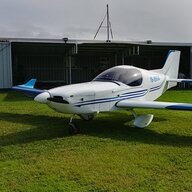-
Posts
4,825 -
Joined
-
Last visited
-
Days Won
140

kgwilson replied to red750's topic in Aircraft Incidents and Accidents

kgwilson replied to Lyndon's topic in Aircraft General Discussion

kgwilson replied to Lyndon's topic in Aircraft General Discussion

kgwilson replied to kgwilson's topic in Aircraft Incidents and Accidents

kgwilson replied to kgwilson's topic in Aircraft Incidents and Accidents




kgwilson replied to flying dog's topic in AUS/NZ General Discussion

kgwilson replied to pmccarthy's topic in Aircraft Incidents and Accidents

kgwilson replied to pmccarthy's topic in Aircraft Incidents and Accidents

kgwilson replied to Garfly's topic in Aircraft Incidents and Accidents

kgwilson replied to Garfly's topic in Aircraft Incidents and Accidents

kgwilson replied to Garfly's topic in Aircraft Incidents and Accidents

kgwilson replied to Garfly's topic in Aircraft Incidents and Accidents

kgwilson replied to BirdDog's topic in Aircraft Incidents and Accidents

